1. The body is really small for a DSLR and is also lightweight (as a result).
2. The AF is fast with Live View, which is actually the only viewing mode it has anyway, and just because it is actually Phase Matching AF instead of Contrast Detection AF (CDAF).
3. Unlike the NEX, it seems that the Live View is not by the imager/sensor, but by the separate sensor in the viewfinder, which relates the same Live View image back to the LCD monitor even if it is used. I can feel that there is a subtle difference in shutter lag so I suspect the LV principle is different. (Or owing to the processing speed, no quite sure here anyway.)
4. The EVF has a large image magnification, I did feel that the displayed image was evener larger than my Full Frame DSLR's OVF! So, I have just revisited the specs page of the A55 to verify this. The A33/55 has a magnification of 1.1X as stated. So, presuming that it is the magnification at 50mm (as it is not mentioned anyway) and the figure should be divided by the crop factor of 1.5, the magnification of the EVF of the A33 is still 0.73X, which is yet larger than that of most of the Canon and Nikon FF DSLRs!
5. The resolution of the EVF is okay, or I would say yet a little bit coarse indeed.
6. The EVF and LCD LV preview has limited DR (Dynamic Range), though. Although the display is bright, the highlights are blown out easily and little details can be seen.
7. The continuous shooting mode is usable, against what DPR commented. The "blackout" of LV image occurs at the time of exposure, but no in-between. As such, framing is still possible, as the blackout is not complete, although the finder image that can be seens is not continuous.
8. Same as the NEX, the 7 frames per second mode is really nice and it works flawlessly. I used not to need any continuous shooting mode in the past with my previous DSLRs (and back to the age of using Pentax film AFSLRs, I even never used it!), but now my shooting habit has been changed since I acquired my NEX!
9. There is no mirror vibration (since the mirror is just fixed), the difference is very noticeable! The only sound I could hear after pressing the shutter release is the mechanical sound of the shutter action. And well, it is exactly the sound that I always hear with my NEX, which is very "crispy", so I am almost certain that the A33 and NEX just uses the same shutter!
10. The kit lens Sony SAL 18-55 is cheaply built, it is the worst plastic toy kit lens with the cheapest outer shell and design I have ever seen and tried (which even worse than the Pentax DAL 18-55 which I already dislike). I am not impressed with the QC of it neither at Sony's Thailand factory. Just say the starting and end position of the zoom at 18 and 55mm (against where it is marked) are usually mis-aligned significantly. The zooming action is not considered to be smoother enough, too. My NEX SEL seems better (although there is yet the mis-alignment issue - when I purchased my NEX, I choose the best lens amongst three!).
11. Now, it comes to the ISO performance and image quality of the lens and camera. The following shots were made indoor under white fluorescent light. All with the kit lens at f/8 and at 55mm at factory default settings, EXIF preserved:-
| ISO 100 | 200 | 400 | 800 |
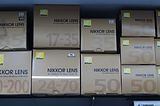 | 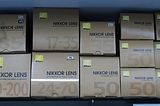 | 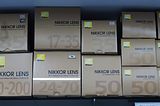 | 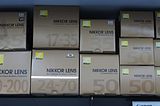 |
| 1600 | 3200 | 6400 | 12800 |
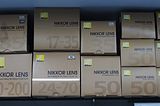 |  | 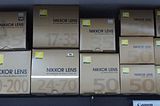 | 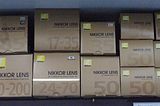 |
My brief observations and comments is that noise are well controlled up to ISO 3200, which I consider to be yet usable. The interesting thing is that noise level is actually increased very linearly per ISO step and increment for ISO speeds from 100 to 3200. As for ISO 6400 and 12800, noise level suddenly jumps up and image colours are changed. It seems that the upper usable ISO limit of this camera is just 3200.
The IQ of the kit lens is not that bad when stopped down one stop to f/8, the camera retains good colours and details, as you can see from my samples.
The A33 reproduces acceptable skin tone at that indoor environment with white artificial light, which seems to be better than my NEX under that condition. If it is just better, then I would scratch my head hard as the NEX is a true P&S design for its Live View principle (and thus the AWB determination) whilst the A33/55 is not, but still the A33/55 is yet better?? In fact, the AWB of the K-x is still the best, which I think I must mention. Furthermore, the K-x user has the choice in the Custom Function that to choose if a "whiter" or a "yellower" AWB under tungsten would be desired, which is again a nice and unique option outhere!
Related:-
My NEX Sample Photos Gallery (36 Original Images Available)
My Ten Reasons to Buy the NEX-3 Over the NEX-5! :-)
NEX-3 Vs K-x Full ISO Shootout (Controlled Test)
Sony NEX-5 VS Pentax K-x ISO/IQ Shootout (Dual Scenes)
Sony NEX-5 and NEX-3 Hands-on Impressions / Quick Review